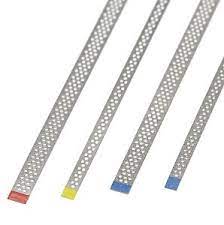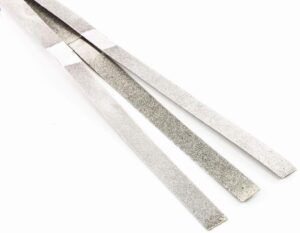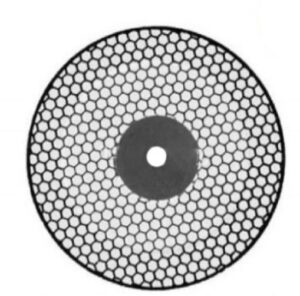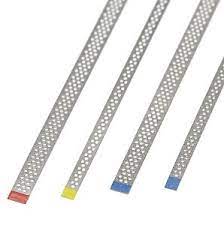What is interproximal reduction?
For orthodontic treatment , interproximal reduction if often required whether you do Invisalign or fixed appliances. Interproximal reduction is the mechanical removal of some of the outer tooth surface, called enamel, between teeth.
How to reduce patient discomfort or fear?
#1. Single sided perforated strip
I do 90% of IPR with this only.
Only one side of the strip has diamond coating. This would created 0.1 mm between adjacent teeth. You may use double sided strip to reduce more or delay further interproximal reduction to 1-2 months later. By then, interproximal contact may get tighter as teeth gets straightened.

Advantages of Single sided perforated strip
- Patient discomfort is less because it is quite thin. What if even this strip doesn’t come through? Slide the center portion (no diamond- coated) through the contact point. The center is the thinnest.
- You can reduce the enamel on one side only. Sometimes you want to do IPR on only selected tooth. If you use double-sided strip, you can’t control it.
- Tooth anatomy can be easily preserved. If you use rotary instruments, tooth shape can be distorted quickly.
Disadvantages
- It may take too long if large amount of IPR is required.
#2. Double-sided non-perforated strip
Maybe 9% of iPR is done with this.
This is thicker than perforated strip. Roughly, 0,2 mm of space is created between the adjacent teeth with this strip. Don’t use this as a initial iPR unless interproximal contact is already open or teeth are mobile.

Advantages
- It can accelerate enamel reduction speed because both sides can reduce enamel.
- Tooth anatomy can be preserved.
Disadvantage
- It may still take too long if large amount of IPR is required.
3. Ultra-flexible disk
This is for large triangular -shaped upper incisors. Maybe 1% of all IPR
Once in a while, I use this flexible disk for IPR. This is for only large upper incisors. You connect this to low speed contra-angle (not straight).
Product name: RA8934A-220 Company: Komet thickess: 0.22 mm

Advantages
- Fast- you will be surprised. Be careful, enamel may be reduced more than you thought.
- Super-flexible- so this has better control for conserving tooth anatomy when compared to more stiffer disk.
Disadvantage
- Tooth shape may be changed
IPR for teeth with mobility
Enamel thickness of premolars and molars
When you perform interproximal reduction (IPR), didn’t you wonder how thick enamel is? There is a classic study about thickness of the enamel on the posterior teeth.
First premolar: 1 mm mesial, distal)
2nd premolar: 1.2 mm (mesial, distal)
1st molar: 1.3 mm (mesial), 1.4 mm (distal)
2nd molar: 1.3 mm (mesial), 1.5 mm (distal)
Stroud JL, English J, Buschang PH. Enamel thickness of the posterior dentition: its implications for nonextraction treatment. The Angle Orthodontist. 1998 Apr;68(2):141-6.read more
References
